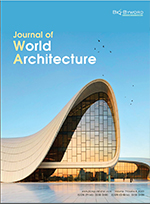Abstract
As a national cultural property, General Zhang Fei’s Temple is the largest ancient architectural complex in the Three Gorges of the Yangtze River. It was built in the Han Dynasty and has a long history of nearly 2,000 years. In 1994, the Chinese government launched the Three Gorges Dam project at the Yangtze River and implemented the largest relocation project for the General Zhang Fei Temple to prevent it from being submerged. The temple was relocated 32 kilometers upstream along with the local people of Yunyang County, and the historic environment was rebuilt on the opposite side of the migrant city of New Yunyang County. The temple was restored successfully and the tradition of offering sacrifices to General Zhang Fei continued in the local community. The relocation project lasted for 8 years and became the largest cultural heritage conservation project of the People’s Republic of China at the end of the 20th century. This paper comprehensively summarizes and reviews the project goals, implementation process, and project highlights of this relocation, so as to provide an important case reference for heritage conservation projects in the future.
References
Wen W, (ed) 1985, Sichuan Landscape, Sichuan People’s Publishing House, Chengdu.
Editorial Committee of Yunyang County Chronicles, (eds) 1999, Yunyang County Chronicles, Sichuan People’s Publishing House.
Lv Z, 2006, Invite General Zhang Fei to be an “Immigrant” and Discuss Some Issues of Cultural Relics Protection. China Three Gorges Construction, 2006(02): 80–83.
Xiong K, 2010, The Whole Decision-Making Process of the Three Gorges Project. Dang Shi Wen Yuan, 2010(19): 4–9.
Li H, 2004, Zhang Fei Temple Relocation and Protection Project. Chinese Cultural Heritage, 2004(03): 102.
Feilden BM, 2003, Conservation of Historic Buildings, Architectural Press, Amsterdam, Boston.
Fekri AH, 2007, The Aswan High Dam and the International Rescue Nubia Campaign: Springer Science + Business Media. Afr Archaeol Rev, 24: 73–94.
Zhu Y, 2004, Research on the Protection of Zhang Fei Temple Relocation Project in Chongqing, thesis, Tsinghua University.
Sun H, 2008, A Brief Study of Zhang Huanhou Temple in Yunyang, Chongqing — Also on the Gains and Losses of Zhang Huanhou Temple’s Relocation and Protection. Yangtze River Civilization, 2008(2): 8–19.
Lv Z, 1993, Demonstration on The Protection of Cultural Relics in the Submerged Area of the Three Gorges of the Yangtze River — The Protection Demonstration of Zhanghuanhou Temple in Yunyang, Archives of the School of Architecture, Tsinghua University.
Shu Q, Chen H, 2010, Research on the Protection of Ground Cultural Relics in the Three Gorges Reservoir Area. People’s Yangtze River, 2010(23): 83–86.
ICOMOS, n.d., International Charter for the Conservation and Restoration of Monuments and Sites (The Venice Charter 1964), https://www.icomos.org/images/DOCUMENTS/Charters/venice_e.pdf
Shaanxi Provincial Institute of Ancient Architecture Design. The Planning and Design of The New Relocation Site of Sanzhang Huanhou Temple in Yunyang County 1999.
Hao G, 2006, Review of the Three Gorges Cultural Relics Protection. Outlook News Weekly, 2006(5): 60–63.
Architectural Design and Research Institute of Tsinghua University, School of Architecture, Tsinghua University. Design of Zhang “Feimiao Relocation and Protection Planning Scheme”. Beijing: Archives Office, School of Architecture, Tsinghua University, 1999.
Liang F, 2009, Review of Cultural Relics Protection in the Three Gorges Reservoir Area of the Yangtze River and Follow-up Protection Countermeasures. Journal of Chongqing Three Gorges University, 2009(06): 1–5.
